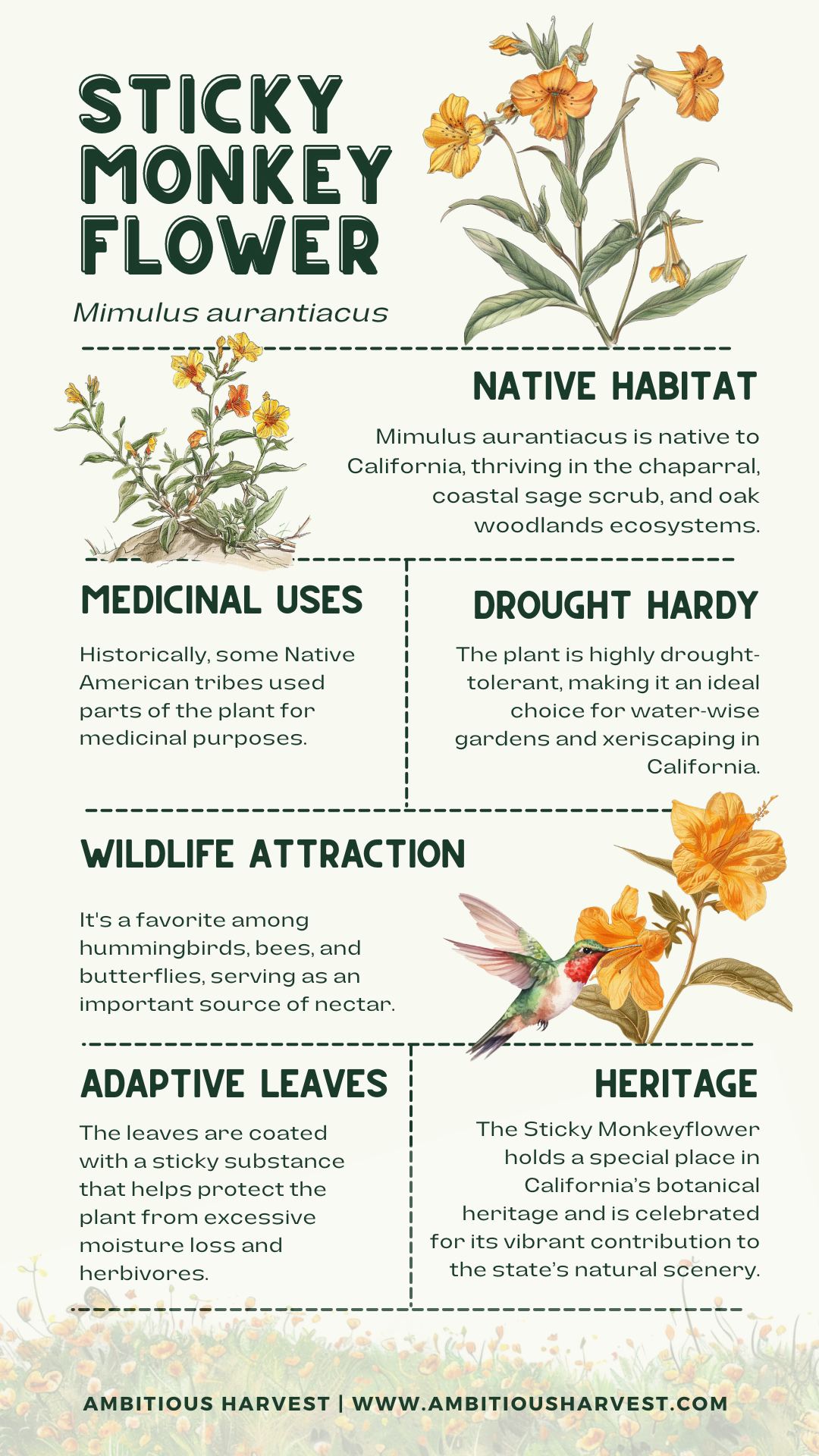Garden Highlight: Sticky Monkey Flower
Explore the resilient beauty of Mimulus aurantiacus, a native gem in California’s floral tapestry.
Mimulus aurantiacus Uncovered: A Vibrant Native Bloom Mimulus aurantiacus, known as the Sticky Monkeyflower, is celebrated for its vibrant orange blossoms that grace California’s wild landscapes. This charming native plant thrives in the state’s chaparral, coastal sage scrub, and oak woodlands, offering a delightful splash of color with its drought-tolerant and wildlife-friendly qualities.
Growing Essentials: Cultivating Sticky Monkeyflower in Your Garden
Seed Starting/Planting: Best planted from nursery-grown starts or propagated from cuttings. Plant in well-drained soil, preferably in fall or early spring.
Planting in California: Thrives in sunny locations, tolerating a range of conditions from coastal bluffs to inland foothills.
Care Requirements: Once established, requires minimal water, making it perfect for water-wise gardens. Prefers little to no fertilization.
USDA Zones Compatibility: Hardy in zones 7-10.
Maturity Timeline: Blooms mainly in spring and summer but can flower sporadically throughout the year.
Plant Type and Frost Tolerance: A perennial shrub that handles coastal and inland climates well.
Growth Pattern: Typically grows 1-3 feet tall and wide. The plant is named for its sticky leaves, which help conserve moisture.
Distinctive Features of Mimulus aurantiacus
Displays vibrant, tubular orange flowers that attract hummingbirds, bees, and butterflies.
The foliage is sticky to the touch, with a light green hue and a slightly aromatic scent.
Mimulus aurantiacus’s Ecological and Aesthetic Benefits
Ecological Impact: Provides nectar for pollinators and is a vital part of California’s native ecosystem.
Ornamental Value: Adds color and texture to native gardens, rock gardens, and dry slopes. Its compact size makes it suitable for containers.
Drought Resistance: An excellent choice for drought-tolerant landscaping, requiring minimal water once established.
Companion Planting and Landscape Use
Beneficial Companions: Pairs well with other California natives like Ceanothus, Salvia, and Manzanita.
Landscape Use: Ideal for adding native beauty to garden borders, wildlife gardens, and Mediterranean-style landscapes.
Harvesting and Enjoying Mimulus aurantiacus: A Native Wonder
Harvesting Techniques: Enjoy its beauty in the garden. Deadheading spent flowers can encourage more blooms.
Propagation: Can be propagated from cuttings or by division.
Garden Use: Perfect for creating a native, low-water garden or adding a burst of color to dry, sunny areas.
Overcoming Gardening Challenges: Mimulus aurantiacus Care
Common Challenges: Prefers well-draining soil to avoid root rot. Tolerant of different soil types, including clay and sandy soils.
California-Specific Growing Tips: Adapts well to California’s varied climates. Can be pruned lightly to maintain shape and promote bushier growth.
Mimulus aurantiacus: A Symbol of California’s Wild Beauty The Sticky Monkeyflower is a testament to the resilience and charm of California’s native flora. Its ease of care, vibrant blooms, and ecological benefits make it a prized addition to sustainable gardens across the state.






